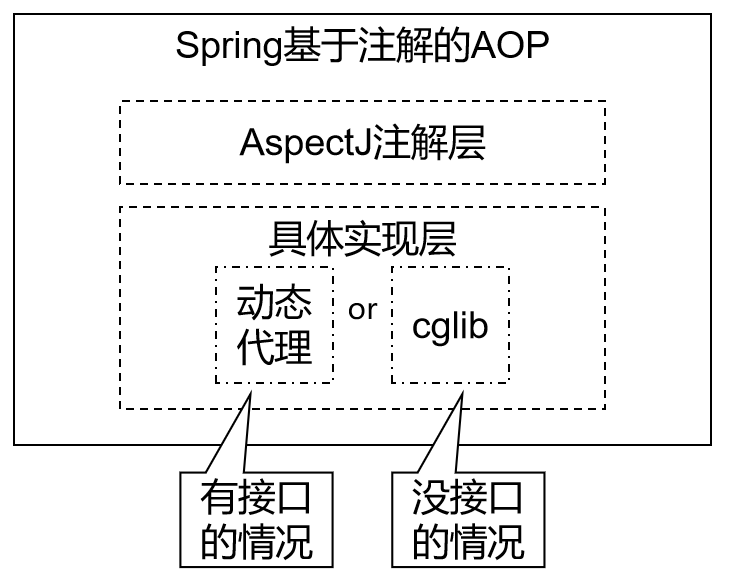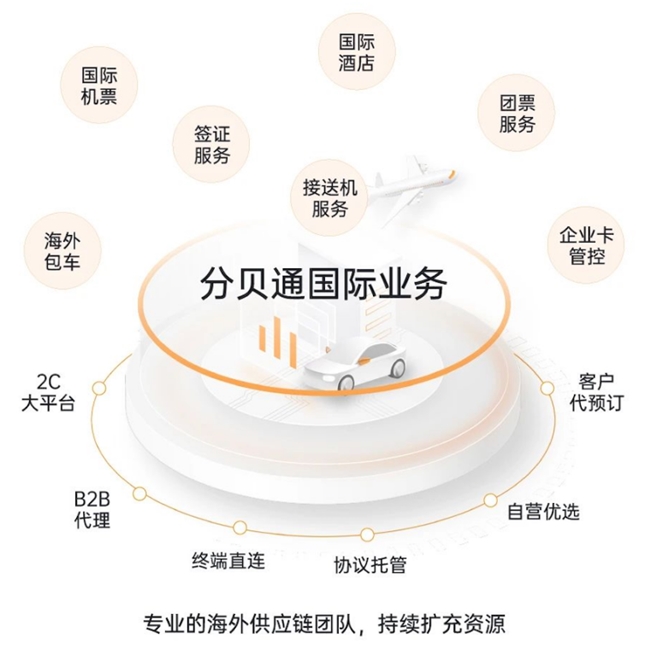本首先简介23种设计模式,然后用Go语言实现这23种设计模式进行举例分析。希望对您理解这些设计模式有所帮助!
一、设计模式简介
设计模式是软件设计中用于解决常见设计问题的一套最佳实践。它们不是代码片段,而是解决特定问题的通用方案。设计模式分为三大类:创建型模式、结构型模式和行为型模式。
创建型模式
创建型模式关注对象的创建过程。它们使得系统独立于对象的创建、组合和表示。常见的创建型模式有:
- 单例模式 (Singleton):确保一个类只有一个实例,并提供一个全局访问点。
- 工厂方法模式 (Factory Method):定义一个创建对象的接口,但让子类决定实例化哪一个类。
- 抽象工厂模式 (Abstract Factory):提供一个接口,用于创建相关或依赖对象的家族,而无需明确指定具体类。
- 建造者模式 (Builder):将一个复杂对象的构建过程与其表示分离,使得同样的构建过程可以创建不同的表示。
- 原型模式 (Prototype):通过复制现有的实例来创建新的对象,而不是通过实例化类。
结构型模式
结构型模式关注类和对象的组合。它们帮助确保系统结构的灵活性和效率。常见的结构型模式有:
- 适配器模式 (Adapter):将一个类的接口转换成客户希望的另一个接口,使原本不兼容的类可以一起工作。
- 桥接模式 (Bridge):将抽象部分与它的实现部分分离,使它们可以独立变化。
- 组合模式 (Composite):将对象组合成树形结构以表示“部分-整体”的层次结构,使得客户可以一致地处理单个对象和对象组合。
- 装饰模式 (Decorator):动态地给对象添加一些额外的职责,比生成子类更灵活。
- 外观模式 (Facade):为子系统中的一组接口提供一个一致的界面,使得子系统更容易使用。
- 享元模式 (Flyweight):通过共享尽可能多的细节来支持大量细粒度对象的高效共享。
- 代理模式 (Proxy):为其他对象提供一个代理以控制对这个对象的访问。
行为型模式
行为型模式关注对象之间的交互方式及职责划分。它们有助于使系统中的对象更容易通信和交互。常见的行为型模式有:
- 责任链模式 (Chain of Responsibility):将请求的发送者和接收者解耦,使多个对象都有机会处理这个请求。
- 命令模式 (Command):将一个请求封装为一个对象,从而使您可以用不同的请求对客户进行参数化。
- 解释器模式 (Interpreter):为语言创建解释器,定义语言的文法,并建立一个解释器来解释这些文法。
- 迭代器模式 (Iterator):提供一种方法顺序访问一个聚合对象中的各个元素,而无需暴露其内部表示。
- 中介者模式 (Mediator):用一个中介对象来封装一系列对象的交互。
- 备忘录模式 (Memento):在不破坏封装性的前提下,捕获并外部化一个对象的内部状态,以便以后恢复它。
- 观察者模式 (Observer):定义对象间的一种一对多的依赖关系,使得每当一个对象改变状态,则所有依赖于它的对象都会得到通知并被自动更新。
- 状态模式 (State):允许对象在其内部状态改变时改变其行为。
- 策略模式 (Strategy):定义一系列算法,把每一个算法封装起来,并且使它们可以互换。
- 模板方法模式 (Template Method):定义一个操作中的算法骨架,而将一些步骤延迟到子类中。
- 访问者模式 (Visitor):表示一个作用于某对象结构中的各元素的操作。它使您可以在不改变各元素的类的前提下定义作用于这些元素的新操作。
这些设计模式在实际应用中可以大大提高代码的可维护性和可重用性。了解并掌握这些模式对于设计健壮、灵活的软件系统是非常重要的。
二、Go语言实现23总设计模式
好的,我们重新从头开始,依次实现所有的设计模式。每个设计模式会有Go代码示例、Mermaid图和详细说明。
创建型模式(5种)
1. 单例模式 (Singleton)
单例模式确保一个类只有一个实例,并提供一个全局访问点。
Go代码示例
package main
import (
"fmt"
"sync"
)
// Singleton 结构体
type Singleton struct{}
var instance *Singleton
var once sync.Once
// GetInstance 获取单例实例
func GetInstance() *Singleton {
once.Do(func() {
instance = &Singleton{}
})
return instance
}
func main() {
s1 := GetInstance()
s2 := GetInstance()
if s1 == s2 {
fmt.Println("两个实例是相同的")
} else {
fmt.Println("两个实例是不同的")
}
}
Mermaid图
2. 工厂方法模式 (Factory Method)
工厂方法模式定义一个创建对象的接口,但让子类决定实例化哪一个类。
Go代码示例
package main
import "fmt"
// 操作接口
type Operation interface {
Perform(a, b int) int
}
// 加法结构体
type Add struct{}
// 加法实现
func (Add) Perform(a, b int) int {
return a + b
}
// 工厂方法
func getOperation(opType string) Operation {
switch opType {
case "add":
return Add{}
default:
return nil
}
}
func main() {
op := getOperation("add")
if op != nil {
result := op.Perform(3, 4)
fmt.Println("结果:", result)
} else {
fmt.Println("无效的操作类型")
}
}
Mermaid图
3. 抽象工厂模式 (Abstract Factory)
抽象工厂模式提供一个接口,用于创建相关或依赖对象的家族,而无需明确指定具体类。
Go代码示例
package main
import "fmt"
// 抽象产品A
type AbstractProductA interface {
UseA()
}
// 抽象产品B
type AbstractProductB interface {
UseB()
}
// 具体产品A1
type ProductA1 struct{}
func (p *ProductA1) UseA() {
fmt.Println("使用产品A1")
}
// 具体产品B1
type ProductB1 struct{}
func (p *ProductB1) UseB() {
fmt.Println("使用产品B1")
}
// 抽象工厂
type AbstractFactory interface {
CreateProductA() AbstractProductA
CreateProductB() AbstractProductB
}
// 具体工厂1
type Factory1 struct{}
func (f *Factory1) CreateProductA() AbstractProductA {
return &ProductA1{}
}
func (f *Factory1) CreateProductB() AbstractProductB {
return &ProductB1{}
}
func main() {
factory := &Factory1{}
productA := factory.CreateProductA()
productB := factory.CreateProductB()
productA.UseA()
productB.UseB()
}
Mermaid图
4. 建造者模式 (Builder)
建造者模式将一个复杂对象的构建过程与其表示分离,使得同样的构建过程可以创建不同的表示。
Go代码示例
package main
import "fmt"
// 产品
type Product struct {
Part1 string
Part2 string
}
// 建造者接口
type Builder interface {
BuildPart1()
BuildPart2()
GetResult() Product
}
// 具体建造者
type ConcreteBuilder struct {
product Product
}
func (b *ConcreteBuilder) BuildPart1() {
b.product.Part1 = "Part1"
}
func (b *ConcreteBuilder) BuildPart2() {
b.product.Part2 = "Part2"
}
func (b *ConcreteBuilder) GetResult() Product {
return b.product
}
// 指挥者
type Director struct {
builder Builder
}
func (d *Director) Construct() {
d.builder.BuildPart1()
d.builder.BuildPart2()
}
func main() {
builder := &ConcreteBuilder{}
director := &Director{builder: builder}
director.Construct()
product := builder.GetResult()
fmt.Println("Product:", product)
}
Mermaid图
5. 原型模式 (Prototype)
原型模式通过复制现有的实例来创建新的对象,而不是通过实例化类。
Go代码示例
package main
import "fmt"
// 原型接口
type Prototype interface {
Clone() Prototype
}
// 具体原型
type ConcretePrototype struct {
field string
}
func (p *ConcretePrototype) Clone() Prototype {
return &ConcretePrototype{field: p.field}
}
func main() {
prototype := &ConcretePrototype{field: "value"}
clone := prototype.Clone()
fmt.Println("Prototype field:", prototype.field)
fmt.Println("Clone field:", clone.(*ConcretePrototype).field)
}
Mermaid图
结构型模式(7种)
6. 适配器模式 (Adapter)
适配器模式将一个类的接口转换成客户希望的另一个接口,使原本不兼容的类可以一起工作。
Go代码示例
package main
import "fmt"
// 旧接口
type OldPrinter interface {
PrintOld(s string) string
}
// 旧实现
type MyOldPrinter struct{}
func (p *MyOldPrinter) PrintOld(s string) string {
return "Old Printer: " + s
}
// 新接口
type NewPrinter interface {
PrintNew(s string) string
}
// 适配器
type PrinterAdapter struct {
OldPrinter
}
func (p *PrinterAdapter) PrintNew(s string) string {
return p.PrintOld(s)
}
func main() {
oldPrinter := &MyOldPrinter{}
adapter := &PrinterAdapter{OldPrinter: oldPrinter}
msg := adapter.PrintNew("Hello, World!")
fmt.Println(msg)
}
Mermaid图
7. 桥接模式 (Bridge)
桥接模式将抽象部分与它的实现部分分离,使它们可以独立变化。
Go代码示例
package main
import "fmt"
// 实现接口
type Implementor interface {
OperationImpl() string
}
// 具体实现A
type ConcreteImplementorA struct{}
func (c *ConcreteImplementorA) OperationImpl() string {
return "具体实现A"
}
// 具体实现B
type ConcreteImplementorB struct{}
func (c *ConcreteImplementorB) OperationImpl() string {
return "具体实现B"
}
// 抽象
type Abstraction struct {
implementor Implementor
}
func (a *Abstraction) Operation() {
fmt.Println(a.implementor
.OperationImpl())
}
// 精确抽象A
type RefinedAbstractionA struct {
Abstraction
}
func main() {
implementorA := &ConcreteImplementorA{}
implementorB := &ConcreteImplementorB{}
abstractionA := &Abstraction{implementor: implementorA}
abstractionB := &Abstraction{implementor: implementorB}
abstractionA.Operation()
abstractionB.Operation()
}
Mermaid图
8. 组合模式 (Composite)
组合模式将对象组合成树形结构以表示“部分-整体”的层次结构,使客户端对单个对象和组合对象的使用具有一致性。
Go代码示例
package main
import "fmt"
// 组件接口
type Component interface {
Operation()
}
// 叶子节点
type Leaf struct {
name string
}
func (l *Leaf) Operation() {
fmt.Println("Leaf", l.name, "Operation")
}
// 组合节点
type Composite struct {
children []Component
}
func (c *Composite) Add(child Component) {
c.children = append(c.children, child)
}
func (c *Composite) Operation() {
for _, child := range c.children {
child.Operation()
}
}
func main() {
leaf1 := &Leaf{name: "A"}
leaf2 := &Leaf{name: "B"}
composite := &Composite{}
composite.Add(leaf1)
composite.Add(leaf2)
composite.Operation()
}
Mermaid图
9. 装饰模式 (Decorator)
装饰模式动态地给对象添加一些职责,通过创建一个包装对象来包裹真实对象。
Go代码示例
package main
import "fmt"
// 组件接口
type Component interface {
Operation()
}
// 具体组件
type ConcreteComponent struct{}
func (c *ConcreteComponent) Operation() {
fmt.Println("具体组件操作")
}
// 装饰器
type Decorator struct {
component Component
}
func (d *Decorator) SetComponent(component Component) {
d.component = component
}
func (d *Decorator) Operation() {
if d.component != nil {
d.component.Operation()
}
}
// 具体装饰器A
type ConcreteDecoratorA struct {
Decorator
}
func (c *ConcreteDecoratorA) Operation() {
c.Decorator.Operation()
fmt.Println("具体装饰器A操作")
}
// 具体装饰器B
type ConcreteDecoratorB struct {
Decorator
}
func (c *ConcreteDecoratorB) Operation() {
c.Decorator.Operation()
fmt.Println("具体装饰器B操作")
}
func main() {
component := &ConcreteComponent{}
decoratorA := &ConcreteDecoratorA{}
decoratorB := &ConcreteDecoratorB{}
decoratorA.SetComponent(component)
decoratorB.SetComponent(decoratorA)
decoratorB.Operation()
}
Mermaid图
10. 外观模式 (Facade)
外观模式提供了一个统一的接口,用来访问子系统中的一群接口,使得子系统更容易使用。
Go代码示例
package main
import "fmt"
// 子系统A
type SubsystemA struct{}
func (s *SubsystemA) OperationA() {
fmt.Println("子系统A操作")
}
// 子系统B
type SubsystemB struct{}
func (s *SubsystemB) OperationB() {
fmt.Println("子系统B操作")
}
// 外观
type Facade struct {
subsystemA *SubsystemA
subsystemB *SubsystemB
}
func (f *Facade) Operation() {
f.subsystemA.OperationA()
f.subsystemB.OperationB()
}
func main() {
facade := &Facade{
subsystemA: &SubsystemA{},
subsystemB: &SubsystemB{},
}
facade.Operation()
}
Mermaid图
11. 享元模式 (Flyweight)
享元模式通过共享技术来有效地支持大量细粒度对象的复用。
Go代码示例
package main
import (
"fmt"
)
// 享元接口
type Flyweight interface {
Operation(extrinsicState string)
}
// 具体享元
type ConcreteFlyweight struct {
intrinsicState string
}
func (f *ConcreteFlyweight) Operation(extrinsicState string) {
fmt.Println("Intrinsic State =", f.intrinsicState, "Extrinsic State =", extrinsicState)
}
// 享元工厂
type FlyweightFactory struct {
flyweights map[string]Flyweight
}
func NewFlyweightFactory() *FlyweightFactory {
return &FlyweightFactory{
flyweights: make(map[string]Flyweight),
}
}
func (f *FlyweightFactory) GetFlyweight(key string) Flyweight {
if flyweight, ok := f.flyweights[key]; ok {
return flyweight
}
flyweight := &ConcreteFlyweight{intrinsicState: key}
f.flyweights[key] = flyweight
return flyweight
}
func main() {
factory := NewFlyweightFactory()
flyweight1 := factory.GetFlyweight("A")
flyweight1.Operation("1")
flyweight2 := factory.GetFlyweight("A")
flyweight2.Operation("2")
flyweight3 := factory.GetFlyweight("B")
flyweight3.Operation("3")
}
Mermaid图
12. 代理模式 (Proxy)
代理模式为其他对象提供一种代理以控制对这个对象的访问。
Go代码示例
package main
import "fmt"
// 接口
type Subject interface {
Request()
}
// 真实主题
type RealSubject struct{}
func (r *RealSubject) Request() {
fmt.Println("真实主题请求")
}
// 代理
type Proxy struct {
realSubject *RealSubject
}
func (p *Proxy) Request() {
if p.realSubject == nil {
p.realSubject = &RealSubject{}
}
fmt.Println("代理请求")
p.realSubject.Request()
}
func main() {
proxy := &Proxy{}
proxy.Request()
}
Mermaid图
行为型模式(11种)
13. 责任链模式 (Chain of Responsibility)
责任链模式通过给多个对象处理同一个请求来避免请求的发送者与接收者耦合。
Go代码示例
package main
import "fmt"
// 处理者接口
type Handler interface {
SetNext(handler Handler)
Handle(request int)
}
// 基础处理者
type BaseHandler struct {
next Handler
}
func (h *BaseHandler) SetNext(handler Handler) {
h.next = handler
}
func (h *BaseHandler) Handle(request int) {
if h.next != nil {
h.next.Handle(request)
}
}
// 具体处理者1
type ConcreteHandler1 struct {
BaseHandler
}
func (h *ConcreteHandler1) Handle(request
int) {
if request < 10 {
fmt.Println("ConcreteHandler1 处理请求", request)
} else {
h.BaseHandler.Handle(request)
}
}
// 具体处理者2
type ConcreteHandler2 struct {
BaseHandler
}
func (h *ConcreteHandler2) Handle(request int) {
if request >= 10 && request < 20 {
fmt.Println("ConcreteHandler2 处理请求", request)
} else {
h.BaseHandler.Handle(request)
}
}
func main() {
handler1 := &ConcreteHandler1{}
handler2 := &ConcreteHandler2{}
handler1.SetNext(handler2)
requests := []int{5, 14, 22}
for _, request := range requests {
handler1.Handle(request)
}
}
Mermaid图
14. 命令模式 (Command)
命令模式将请求封装为一个对象,从而使您可以用不同的请求对客户进行参数化,对请求排队或记录请求日志,以及支持可撤销的操作。
Go代码示例
package main
import "fmt"
// 命令接口
type Command interface {
Execute()
}
// 具体命令
type ConcreteCommand struct {
receiver *Receiver
}
func (c *ConcreteCommand) Execute() {
c.receiver.Action()
}
// 接收者
type Receiver struct{}
func (r *Receiver) Action() {
fmt.Println("接收者的动作")
}
// 调用者
type Invoker struct {
command Command
}
func (i *Invoker) SetCommand(command Command) {
i.command = command
}
func (i *Invoker) Invoke() {
i.command.Execute()
}
func main() {
receiver := &Receiver{}
command := &ConcreteCommand{receiver: receiver}
invoker := &Invoker{}
invoker.SetCommand(command)
invoker.Invoke()
}
Mermaid图
15. 解释器模式 (Interpreter)
解释器模式定义了一个语言的文法,并且通过解释器来解释语言中的句子。
Go代码示例
package main
import (
"fmt"
"strings"
)
// 表达式接口
type Expression interface {
Interpret(context string) bool
}
// 终端表达式
type TerminalExpression struct {
data string
}
func (t *TerminalExpression) Interpret(context string) bool {
return strings.Contains(context, t.data)
}
// 或表达式
type OrExpression struct {
expr1, expr2 Expression
}
func (o *OrExpression) Interpret(context string) bool {
return o.expr1.Interpret(context) || o.expr2.Interpret(context)
}
// 与表达式
type AndExpression struct {
expr1, expr2 Expression
}
func (a *AndExpression) Interpret(context string) bool {
return a.expr1.Interpret(context) && a.expr2.Interpret(context)
}
func main() {
expr1 := &TerminalExpression{data: "Hello"}
expr2 := &TerminalExpression{data: "World"}
orExpr := &OrExpression{expr1: expr1, expr2: expr2}
andExpr := &AndExpression{expr1: expr1, expr2: expr2}
context1 := "Hello"
context2 := "Hello World"
fmt.Println("Context1 is 'Hello':", orExpr.Interpret(context1))
fmt.Println("Context2 is 'Hello World':", andExpr.Interpret(context2))
}
Mermaid图
16. 迭代器模式 (Iterator)
迭代器模式提供了一种方法,可以顺序访问集合对象中的元素,而不暴露集合对象的内部表示。这个模式主要用于提供一种遍历访问集合中的元素的方法。
Go语言代码示例
package main
import "fmt"
// Iterator 是迭代器接口,定义了遍历元素的相关方法
type Iterator interface {
HasNext() bool
Next() interface{}
}
// Aggregate 是集合接口,定义了创建迭代器的方法
type Aggregate interface {
CreateIterator() Iterator
}
// ConcreteIterator 是具体的迭代器,实现了 Iterator 接口
type ConcreteIterator struct {
collection *ConcreteAggregate
index int
}
func (i *ConcreteIterator) HasNext() bool {
return i.index < len(i.collection.items)
}
func (i *ConcreteIterator) Next() interface{} {
item := i.collection.items[i.index]
i.index++
return item
}
// ConcreteAggregate 是具体的集合,提供迭代器的实现
type ConcreteAggregate struct {
items []interface{}
}
func (a *ConcreteAggregate) CreateIterator() Iterator {
return &ConcreteIterator{
collection: a,
index: 0,
}
}
func main() {
aggregate := &ConcreteAggregate{
items: []interface{}{"Item1", "Item2", "Item3"},
}
iterator := aggregate.CreateIterator()
for iterator.HasNext() {
item := iterator.Next()
fmt.Println(item)
}
}
Mermaid图示
17. 中介者模式 (Mediator)
中介者模式定义一个对象来封装一系列对象之间的交互,使得这些对象不需要显式地相互引用,从而使得它们可以松散耦合。
Go代码示例
package main
import "fmt"
// 中介者接口
type Mediator interface {
Send(message string, colleague Colleague)
}
// 同事接口
type Colleague interface {
Send(message string)
Receive(message string)
}
// 具体同事1
type ConcreteColleague1 struct {
mediator Mediator
}
func (c *ConcreteColleague1) Send(message string) {
c.mediator.Send(message, c)
}
func (c *ConcreteColleague1) Receive(message string) {
fmt.Println("ConcreteColleague1 收到消息:", message)
}
// 具体同事2
type ConcreteColleague2 struct {
mediator Mediator
}
func (c *ConcreteColleague2) Send(message string) {
c.mediator.Send(message, c)
}
func (c *ConcreteColleague2) Receive(message string) {
fmt.Println("ConcreteColleague2 收到消息:", message)
}
// 具体中介者
type ConcreteMediator struct {
colleague1 *ConcreteColleague1
colleague2 *ConcreteColleague2
}
func (m *ConcreteMediator) Send(message string, colleague Colleague) {
if colleague == m.colleague1 {
m.colleague2.Receive(message)
} else {
m.colleague1.Receive(message)
}
}
func main() {
mediator := &ConcreteMediator{}
colleague1 := &ConcreteColleague1{mediator: mediator}
colleague2 := &ConcreteColleague2{mediator: mediator}
mediator.colleague1 = colleague1
mediator.colleague2 = colleague2
colleague1.Send("Hello from Colleague1")
colleague2.Send("Hello from Colleague2")
}
Mermaid图
18. 状态模式 (State)
状态模式允许对象在内部状态改变时改变其行为,对象看起来好像修改了它的类一样。
Go代码示例
package main
import "fmt"
// 状态接口
type State interface {
Handle(context *Context)
}
// 具体状态A
type ConcreteStateA struct{}
func (s *ConcreteStateA) Handle(context *Context) {
fmt.Println("状态A处理请求")
context.SetState(&ConcreteStateB{})
}
// 具体状态B
type ConcreteStateB struct{}
func (s *ConcreteStateB) Handle(context *Context) {
fmt.Println("状态B处理请求")
context.SetState(&ConcreteStateA{})
}
// 上下文
type Context struct {
state State
}
func (c *Context) SetState(state State) {
c.state = state
}
func (c *Context) Request() {
c.state.Handle(c)
}
func main() {
context := &Context{state: &ConcreteStateA{}}
context.Request()
context.Request()
context.Request()
}
Mermaid图
19. 策略模式 (Strategy)
策略模式定义一系列算法,把它们一个个封装起来,并且使它们可以互换。策略模式让算法的变化独立于使用算法的客户。
Go代码示例
package main
import "fmt"
// 策略接口
type Strategy interface {
Execute(a, b int) int
}
// 具体策略A
type ConcreteStrategyAdd struct{}
func (s *ConcreteStrategyAdd) Execute(a, b int) int {
return a + b
}
// 具体策略B
type ConcreteStrategySubtract struct{}
func (s *ConcreteStrategySubtract) Execute(a, b int) int {
return a - b
}
// 上下文
type Context struct {
strategy Strategy
}
func (c *Context) SetStrategy(strategy Strategy) {
c.strategy = strategy
}
func (c *Context) ExecuteStrategy(a, b int) int {
return c.strategy.Execute(a, b)
}
func main() {
context := &Context{}
context.SetStrategy(&ConcreteStrategyAdd{})
fmt.Println("加法:", context.ExecuteStrategy(3, 4))
context.SetStrategy(&ConcreteStrategySubtract{})
fmt.Println("减法:", context.ExecuteStrategy(7, 5))
}
Mermaid图
20. 模板方法模式 (Template Method)
模板方法模式定义一个操作中的算法的骨架,而将一些步骤延迟到子类中。模板方法使得子类可以不改变一个算法的结构即可重新定义该算法的某些特定步骤。
Go代码示例
package main
import "fmt"
// 抽象类
type AbstractClass interface {
TemplateMethod()
PrimitiveOperation1()
PrimitiveOperation2()
}
// 具体类
type ConcreteClass struct{}
func (c *ConcreteClass) TemplateMethod() {
c.PrimitiveOperation1()
c.PrimitiveOperation2()
}
// 抽象步骤1
func (c *ConcreteClass) PrimitiveOperation1() {
fmt.Println("ConcreteClass PrimitiveOperation1")
}
// 抽象步骤2
func (c *ConcreteClass) PrimitiveOperation2() {
fmt.Println("ConcreteClass PrimitiveOperation2")
}
func main() {
concreteClass := &ConcreteClass{}
concreteClass.TemplateMethod()
}
Mermaid图
21. 访问者模式 (Visitor)
访问者模式表示一个作用于某对象结构中的各元素的操作,它使你可以在不改变这些元素的类的前提下定义作用于这些元素的新操作。
Go代码示例
package main
import "fmt"
// 访问者接口
type Visitor interface {
VisitElementA(elementA *ElementA)
VisitElementB(elementB *ElementB)
}
// 具体访问者
type ConcreteVisitor struct{}
func (v *ConcreteVisitor) VisitElementA(elementA *ElementA) {
fmt.Println("访问者访问ElementA")
}
func (v *ConcreteVisitor) VisitElementB(elementB *ElementB) {
fmt.Println("访问者访问ElementB")
}
// 元素接口
type Element interface {
Accept(visitor Visitor)
}
// 具体元素A
type ElementA struct{}
func (e *ElementA) Accept(visitor Visitor) {
visitor.VisitElementA(e)
}
// 具体元素B
type ElementB struct{}
func (e *ElementB) Accept(visitor Visitor) {
visitor.VisitElementB(e)
}
func main() {
visitor := &ConcreteVisitor{}
elementA := &ElementA{}
elementB := &ElementB{}
elementA.Accept(visitor)
elementB.Accept(visitor)
}
Mermaid图
确实,之前展示了21种设计模式。以下是剩余的2种设计模式(代理模式和备忘录模式)的Go语言实现和Mermaid图表示。
22. 代理模式 (Proxy)
代理模式提供了一个代理对象,控制对其他对象的访问,允许在访问目标对象之前或之后执行一些处理。
Go代码示例
package main
import "fmt"
// 抽象主题
type Subject interface {
Request()
}
// 真实主题
type RealSubject struct{}
func (r *RealSubject) Request() {
fmt.Println("RealSubject: Handling request")
}
// 代理
type Proxy struct {
realSubject *RealSubject
}
func (p *Proxy) Request() {
if p.realSubject == nil {
p.realSubject = &RealSubject{}
}
fmt.Println("Proxy: Checking access before real subject")
p.realSubject.Request()
fmt.Println("Proxy: Logging request after real subject")
}
func main() {
proxy := &Proxy{}
proxy.Request()
}
Mermaid图
23. 备忘录模式 (Memento)
备忘录模式在不暴露对象内部结构的情况下,捕获对象的内部状态,以便在以后恢复对象的状态。
Go代码示例
package main
import "fmt"
// 发起人
type Originator struct {
state string
}
func (o *Originator) SetState(state string) {
o.state = state
fmt.Println("Originator: Setting state to", state)
}
func (o *Originator) SaveStateToMemento() *Memento {
return &Memento{state: o.state}
}
func (o *Originator) RestoreStateFromMemento(memento *Memento) {
o.state = memento.state
fmt.Println("Originator: State restored from Memento to", o.state)
}
// 备忘录
type Memento struct {
state string
}
// 负责人
type Caretaker struct {
memento *Memento
}
func (c *Caretaker) Save(memento *Memento) {
c.memento = memento
}
func (c *Caretaker) Restore() *Memento {
return c.memento
}
func main() {
originator := &Originator{}
caretaker := &Caretaker{}
originator.SetState("State1")
caretaker.Save(originator.SaveStateToMemento())
originator.SetState("State2")
fmt.Println("Current State:", originator.state)
originator.RestoreStateFromMemento(caretaker.Restore())
fmt.Println("Restored State:", originator.state)
}
Mermaid图
以上代码和Mermaid图展示了设计模式的完整实现,希望这些示例能帮助你更好地理解和运用这些设计模式。
完。

希望对您有所帮助!关注锅总,及时获得更多花里胡哨的运维实用操作!
三、一个秘密

锅总个人博客
https://gentlewok.blog.csdn.net/
锅总微信公众号




















